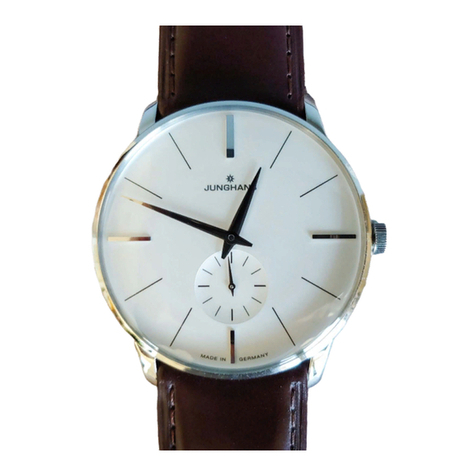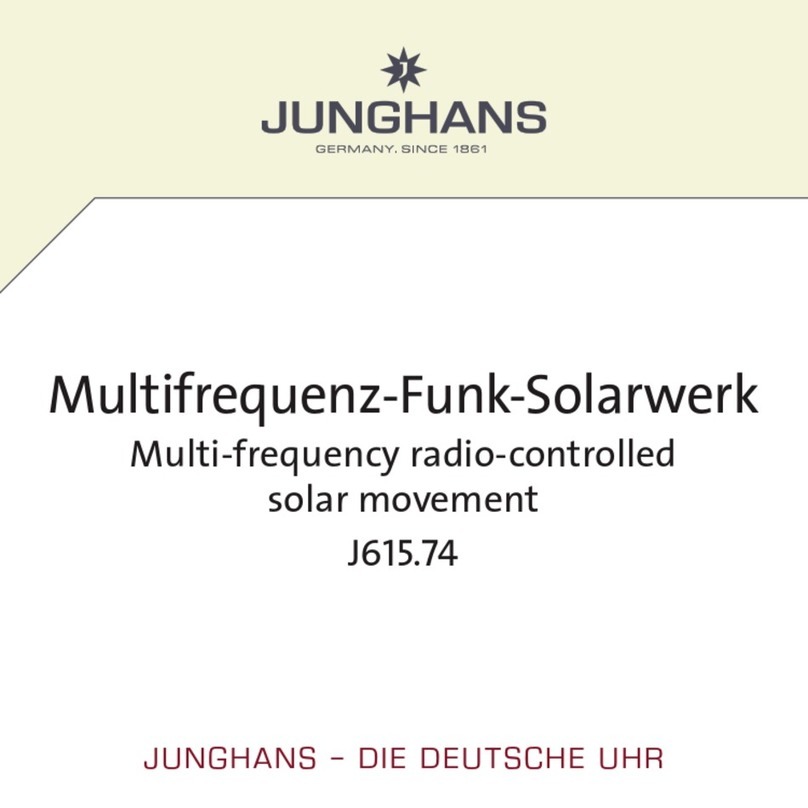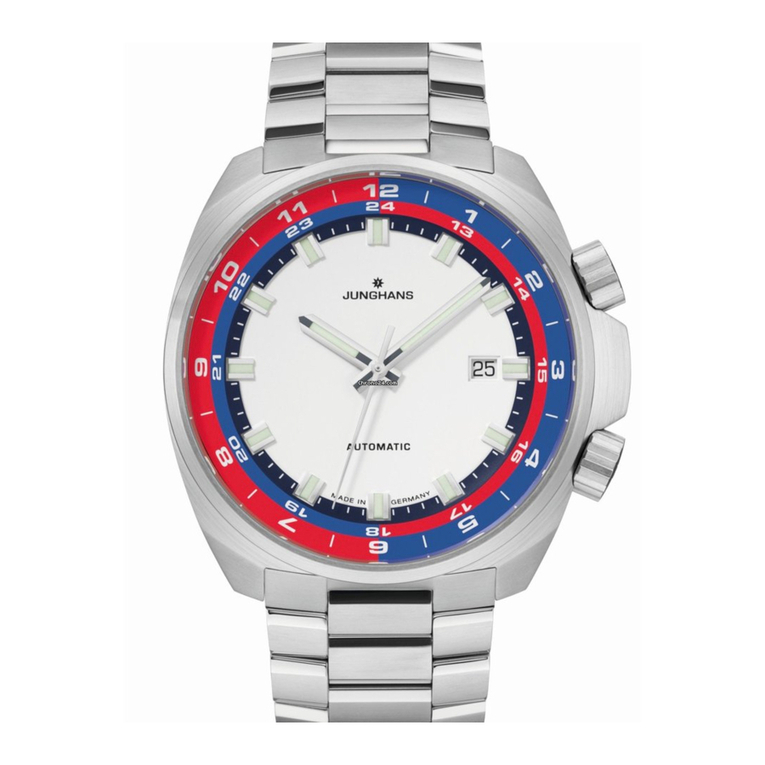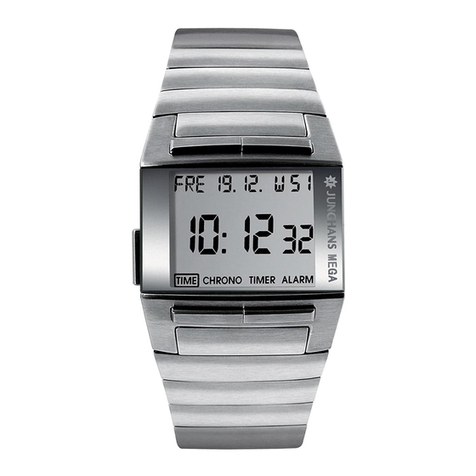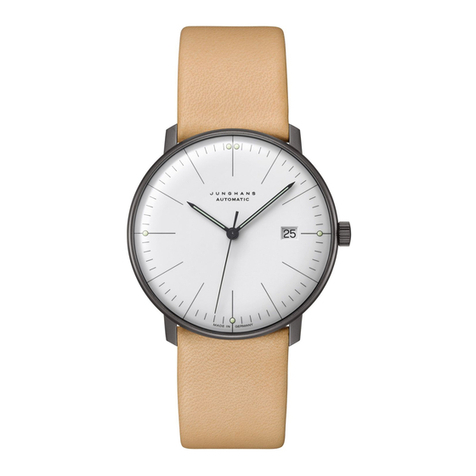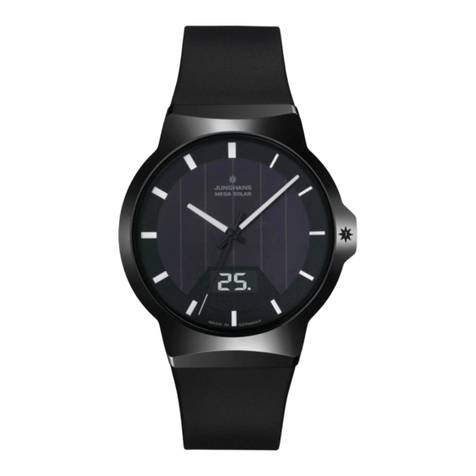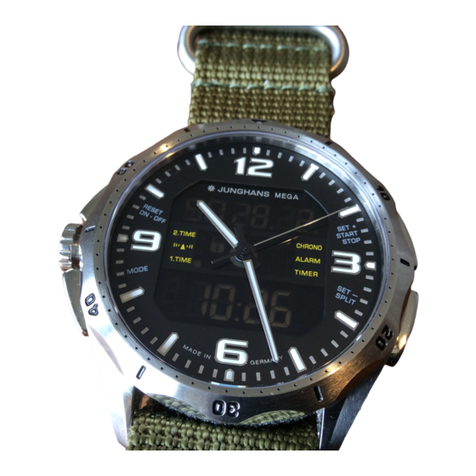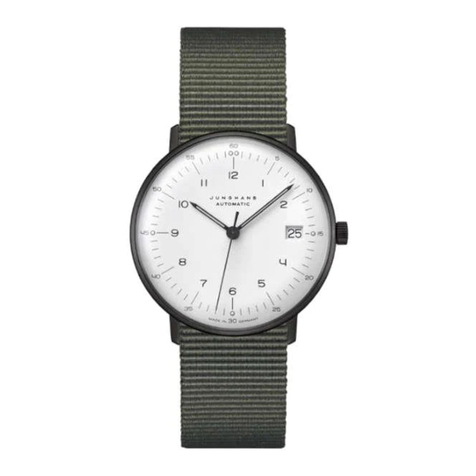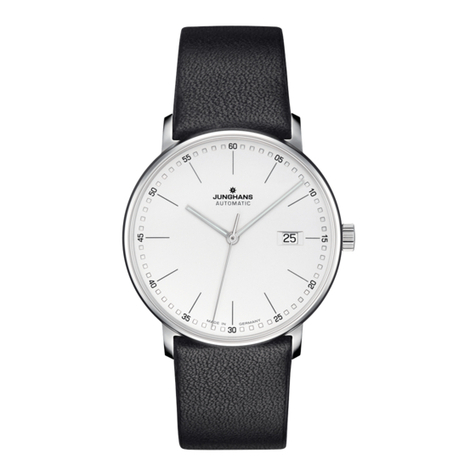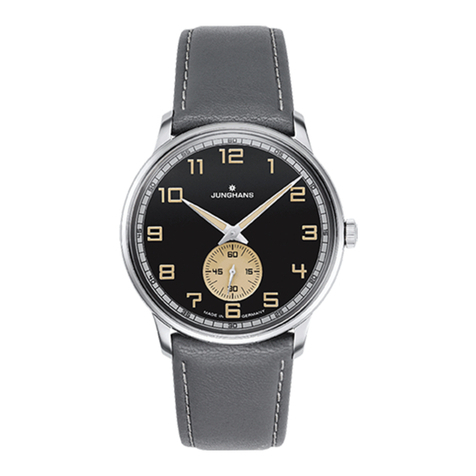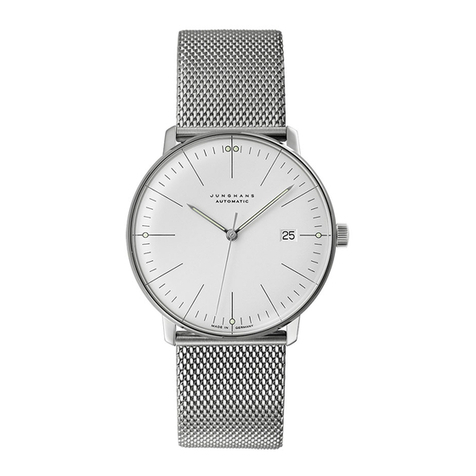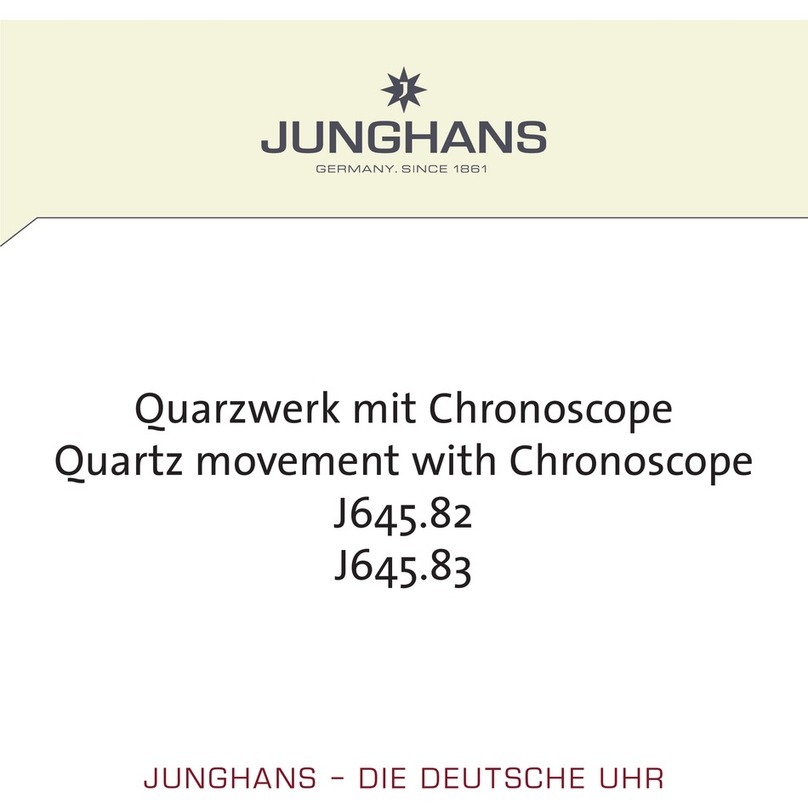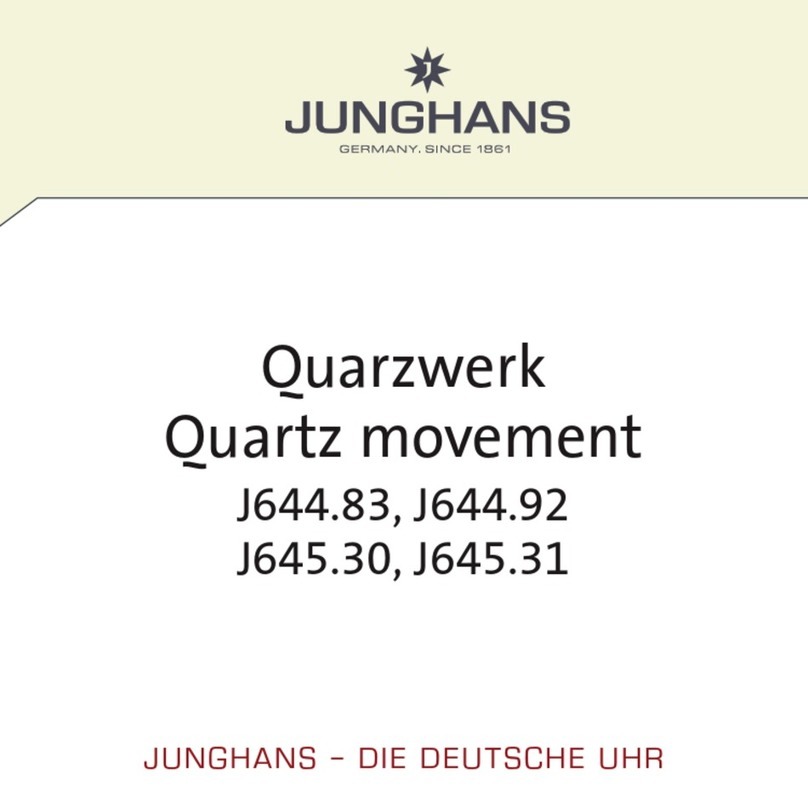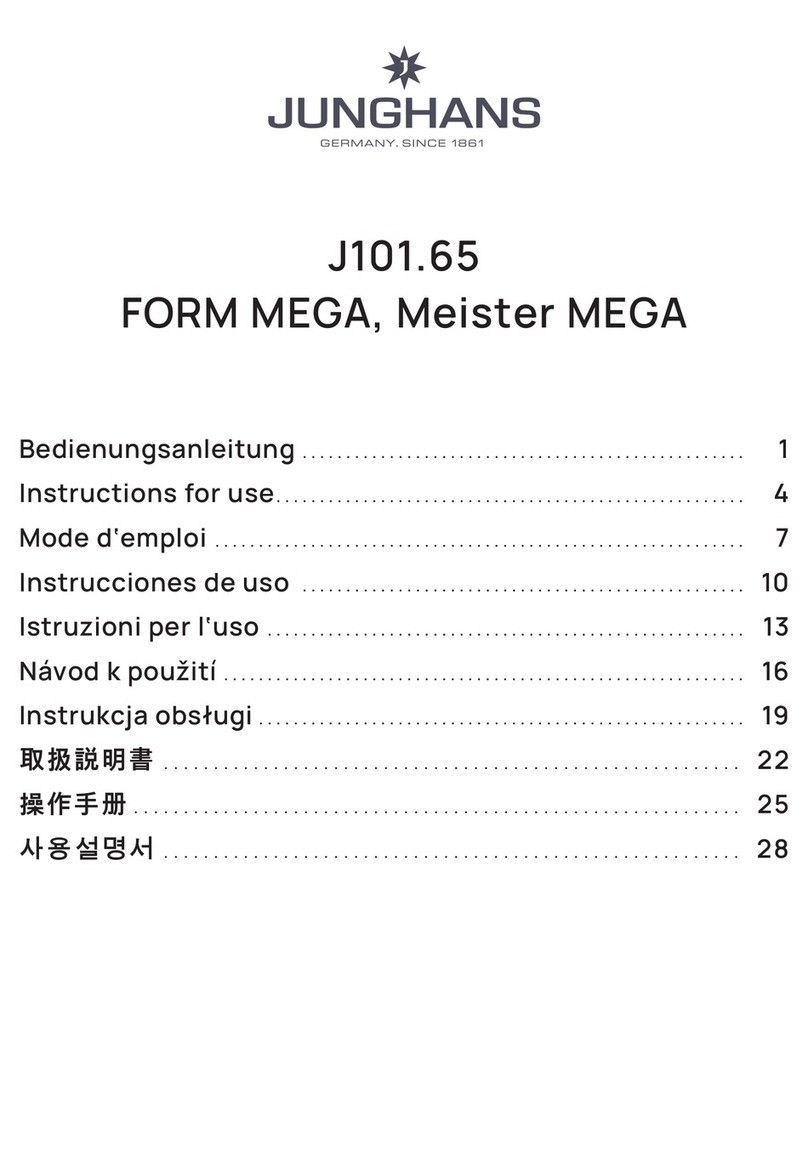4342
6.6 Set language (day of the week display)
Your Junghans multi-frequency radio-controlled watch is shipped with the
language for the day of the week display set to German.
To change the day of week display to a different language, press the T1 but-
ton for over 3 seconds / until [00] is shown on the LCD display. If you then
briefly press the T2 button, [DE] for German is displayed. By pressing briefly
the T2 button again, you can change the date display to English. [En] for
English will now be showing on the LCD display.
In order to switch back and forth between the two languages, simply use the
T2 button.
You quit this menu by pressing the T1 button or automatically if you use
none of the buttons for 9 seconds.
7. Re-starting after changing battery
Following a change of battery, your watch will automatically begin a restart
routine. After you insert the battery, the hands will move to the 12 o’clock
position and your watch will start trying to pick up the time signal. As it does
so, the reception symbol of the transmitter it is currently trying to pick up
flashes. As soon as a signal is being received, the seconds on the LCD display
start to advance. After a few minutes, if the reception process has been suc-
cessful, the watch automatically sets itself to the correct transmitter time.
– On successful reception of the DCF77 transmitter, German local time is
shown, the reception display for the DCF77 is activated on the LCD and
the date is displayed with the day of the week in German.
– On successful reception of the WWVB transmitter, the Pacific time zone
is shown, the reception display for the WWVB is activated on the LCD and
the date is displayed with the day of the week in English.
– On successful reception of the JJY40 or JJY60 transmitter, Japanese local
time is shown, the reception display for the JJY40 or JJY60 is activated on
the LCD and the date is displayed with the day of the week in English.
If the watch goes 30 minutes without picking up a signal, the reception pro-
cess is aborted in order to save power. The hands remain in the 12 o’clock
position and 2 flashing dashes [--] are shown on the LCD display.
If you nevertheless want to use your watch, you are able to set the current
time manually. It then runs like a quartz watch. The procedure is described
in the next section, 7.1 – Manual start.
7.1 Manual start
After an unsuccessful restart (at least 30 minutes with no reception from
any transmitter), you can trigger the manual start routine. This can also be
done during the restart process.
After the hands have reached the 12 o’clock position in the restart routine,
please press button T1. The watch is now in manual start mode.
Manual start mode is indicated by the year, e.g. 2007 [2007], being display-
ed.
Each press of the T2 button moves the display forward a year. Holding down
the T2 button adjusts the year in fast forward mode. Once you have got to
the current year, this needs to be confirmed by briefly pressing the T1 button.
